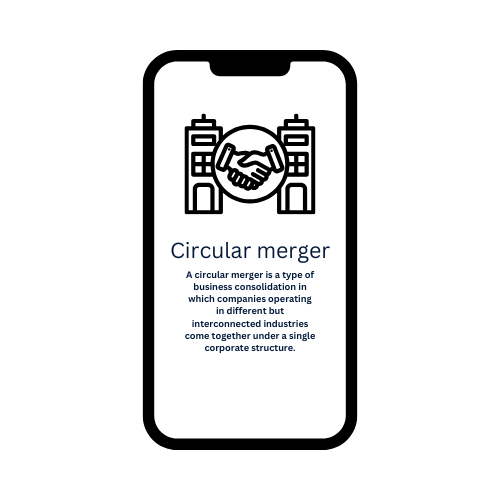Equity mutual fund schemes pool your money and invest in equity stocks after in-depth research. However, it is important to understand the basics of how equity funds work. This includes knowing the objective of the equity fund and mapping it to your risk profile. Next is the asset allocation of the fund followed by the investment strategy. Last but not the least; you also ought to know the expense ratio of the fund as it could impact returns.
Types of equity fund (according to market cap)
Small-cap Equity Funds- These equity mutual fund schemes invest in companies that rank above 250 in terms of their full market capitalization (as per SEBI guidelines). These funds are considered to be riskier than mid- or large-cap equity funds but can offer the relatively higher returns. Their minimum exposure to such stocks is 65% of the total assets.
Mid-cap Equity Funds- These equity mutual fund schemes invest in companies who rank between 101 and 250 by their full market capitalization. These funds are considered to be less risky than small-cap funds, but more than large-cap funds. Their minimum exposure to such stocks is 65% of the total assets.
Large- & Mid-cap Equity Funds- These equity mutual funds equally divide the allocation between large- and mid-cap equity and related instruments and have the potential to offer high returns. The mandated minimum exposure to both large-cap and mid-cap stocks is 35% each of the total assets.
Multi-cap funds- Multi-cap equity funds invest in stocks across large-, mid-, and, small-cap companies. Depending on the market conditions, the fund manager decides the predominant investments. Their minimum exposure to such stocks is 65% of the total assets.
Large-cap Equity Funds – These equity mutual fund schemes invest in companies who rank between 1 and 100 in terms of full market capitalization. These funds are considered to be the least risky as far as equity fund-picking goes. Their minimum exposure to such stocks is 80% of the total assets.
Based on Investment Strategy
Top-down strategy – It means that the sector is chosen first and then the stocks within that sector are purchased in the portfolio.
Bottom-up strategy – It means that well-researched stocks are bought irrespective of the sector.
Growth strategy – It means that the fund will invest in companies that have a consistent track record of profitability and growth and are likely to sustain on this path.
Value strategy – It means that the fund will invest in companies that have the potential to grow exponentially in the future and are currently available at a lower value.
Advantage of investing
Expert managed: Fund managers are market experts who professionally manage equity funds. These experts study the market, analyze the performance of various companies, and invest in the performing stocks that could deliver optimal returns to the investors.
Liquidity: Units of an equity fund can be redeemed anytime on any business day at the applicable NAVs. This offers liquidity to investors. An exception to this is ELSS funds, wherein an investor cannot liquidate unless the lock-in period, i.e. 3 years, is over.
Portfolio diversification: Individuals are exposed to various stocks when they invest in an equity mutual fund. Thus, even if some stocks in the portfolio underperform, the individual would be able to achieve capital gains from the performance of the other stocks investments.
Capital growth Equity funds have the potential to offer considerable returns to beat inflation. Individuals can accrue a substantial amount of wealth over the long-term by investing in equity funds.
Tax benefits: Individuals investing in ELSS funds enjoy tax deduction. An individual can invest Rs. 1.5 lakh in ELSS schemes under Section 80C of the Income Tax Act, 1961, and save up to Rs. 46,800 (assuming the highest slab of income tax i.e. @30% plus education 4%) each year, effectively reducing their tax liabilities.
Active Funds vs. Passive Funds
Equity funds can be either actively managed or passively managed.
- Active Management
Active management refers to when there is a portfolio manager who picks individual equities for the equity fund to invest in, with the goal of beating some form of benchmark.
Active management is characterized by attempting to achieve an “above-average” return by identifying mispriced equities and investing based on those mispricing.
Buying undervalued stocks and short-selling overvalued stocks should, in theory, allow active managers to achieve above-average returns.
- Passive Management
Passive management refers to when the equity fund simply tracks equities that are contained within an index. An index is essentially a basket of equities whose performances are tracked to provide insight into the returns of certain sectors, markets, or geographies.
Passive management is characterized by not reacting to capital market expectations. For example, if a portfolio is tied to the S&P 500 index (representing the U.S. equity markets), it may add or drop holdings in response to the index’s composition, but it will not respond to changes in capital market expectations of individual stocks within the S&P 500.
Things to note when investing in equity mutual funds
Holding period- Just like stocks, holding equity mutual funds for the longer term may yield good returns as the value of the underlying assets increases, cumulating for fund growth. Also, when investors redeem their fund units, they realize capital gains. Short-term capital gains tax is generally higher than long-term capital gains on equity mutual funds.
Expense ratio- The expense ratio of actively managed equity funds is generally high because of the frequent buying and selling of shares. For equity funds, the Securities and Exchange Board of India (SEBI) has set an upper limit of 2.5%. Investors will benefit from a lower expense ratio since their returns will be higher.
Overview
Equity mutual funds provide the highest return when compared to other kinds of mutual funds. On average, the pre-tax return is 10%-12%. But these funds are the most exposed to all sorts of market fluctuations. Therefore, it becomes crucial for an investor to understand their financial goals and preferences well and also communicate the same to the fund manager so that the right combination of stocks is picked to provide maximum returns.







